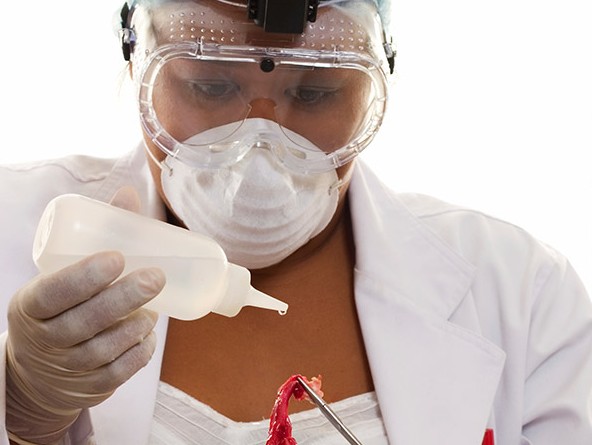
Last year (2013), Izmir in Turkey hosted the Internal Congress of Meat Science and Technology. The theme of the congress was ‘The power of meat in the 21st century’, and it attracted close to 400 researchers from all over the world. The programme highlighted the latest developments in meat science and technology.
Animal welfare is a recurrent theme of this annual international congress. This year, Professor Hayati Köknaroğlu (Suleyman Demirel University, Isparta, Turkey) spoke about the growing world population and the associated rising demand for animal protein. This trend is at odds with improving animal welfare.
Customers of farmers and breeders expect a maximum yield for a minimum price. The professor explained that a proposal has been submitted to the UN, the ‘Universal Declaration of Animal Welfare’, which declares that animals must have: freedom from hunger, thirst and malnutrition; freedom from fear and distress; freedom from pain, injury and disease; freedom from physical and thermal discomfort; and freedom to express normal patterns of behaviour. Especially in the case of the last two points, consumers’ interpretations differ from those of farmers. And this, he claimed, is the source of the sometimes heated discussions between manufacturers and consumer groups. Besides conducting more research into animal behaviour and stress factors, it is also crucial to ensure that consumers are better informed about this topic.
In his introduction, Professor Joo (Institute of Agriculture and Life Sciences, Jinju, South Korea) talked about how the quality of meat can be influenced by making the right choice within what is available. Among other things, intensive studies of aspects such as colour, tenderness and juiciness, texture and the fat on various muscles and muscle groups have led to insights into how those muscles react when exposed to heat and what that means for the ultimate quality of the meat. Previous research has already demonstrated that there are factors that potentially affect the structure of the muscle, including breed, genotype, gender and hormones (e.g. use of additional hormones), the animal’s growth development and diet, the muscle group, the amount of exercise the animal gets and the ambient temperature where the animal is reared. It will take a lot of work on the part of Professor Joo and others to study all those combinations before it is possible to continuously produce high-quality meat by manipulating the above-mentioned factors.
Professor David Gerrard (Virginia Tech University, USA) held an impassioned speech about the transition from live animals (muscle) to meat. Biochemically speaking, different processes occur when an animal is slaughtered: the blood stops flowing and the oxygen in the animal’s body achieves equilibrium with its surroundings. The inactivation of the glycolytic enzymes (which is influenced by pH) also plays a role (and probably leads to a loss of adenine nucleotides); the role of mitochondria is still unclear. His words caused an audible stir in the audience both during and after his presentation. Professor Gerrard challenged the current rigor mortis theory, which has been widely accepted for the past 60 years, with strong and convincing arguments. His alternative view gave plenty of basis for discussion. Young researchers in particular are expected to explore this theory further.
Professor Eva Tornberg (Lund Institute of Technology, Sweden) explained about the ability of meat and meat products to retain water and fat through ultra-high-pressure processing and electronic heating (radio-frequency heating and ohmic heating). The ability of meat to retain water is heavily dependent on capillary strength which holds the moisture between the muscle fibres. Heating causes the muscle fibres to contract, thus squeezing out the moisture between those fibres. Research has shown that this accounts for 80% of the moisture lost when beefburgers are heated in a frying pan. The rest is due to evaporation. The amount of fat lost during frying depends on the fat content: a higher fat content results in a higher loss. In the case of emulsified products (such as sausages) the amount of fat lost during frying is dictated by the protein matrix rather than the total fat content. Processing the meat at ultra-high pressure affects the protein solubility, the protein network, the melting curve of fat and the dissolution of salts, and she covered this in great detail. Ultra-high pressure also has an effect on the solubility of collagen protein and sarcoplasmic protein (which TNO has also established). It has been discovered that heating products using radio frequency limits the amount of water and fat lost, partly thanks to the speed of heating.
Thomas Bolumar (German Institute of Food Technology, Quakenbrück, Germany) talked about a completely different method: shockwave technology, which involves using an electrical discharge to produce shockwaves in water. A patent application was first submitted in 1970 for a technique of tenderising meat by creating shockwaves through explosions. This process was improved in 2000 using a (submersed) capacitor which enabled shockwaves to be created more continuously. This led to a commercial concept: the TenderClass System (supplied by Hydrodyne Incorporated). This makes it possible to improve the tenderness of meat by 25%, said Thomas Bolumar. Questions from the audience about the risk involved with electrical charges in water and the costs of the equipment and treatment could not be answered by Thomas. More research is necessary, he responded.
*In addition to the 65 oral presentations (including 25 keynote speeches), 309 posters were presented. If you would like to receive more information, please contact Theo Verkleij (TNO) or the editors of this publication.
Source: ©iStock.com/lovleah